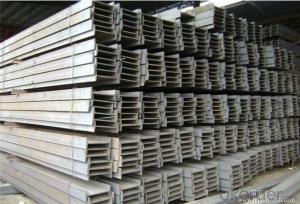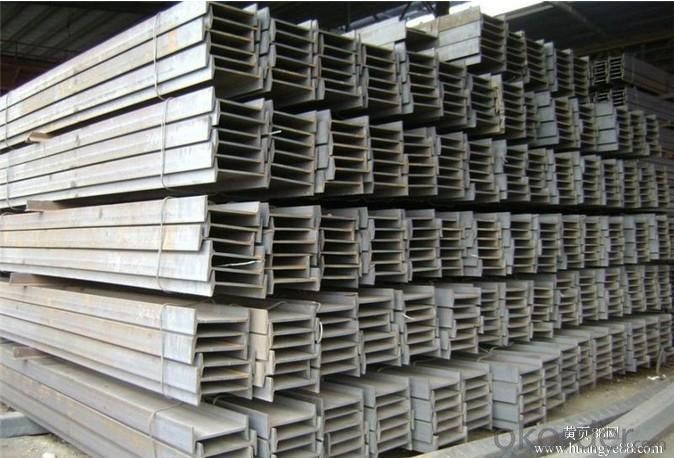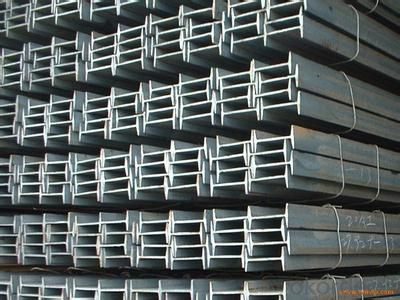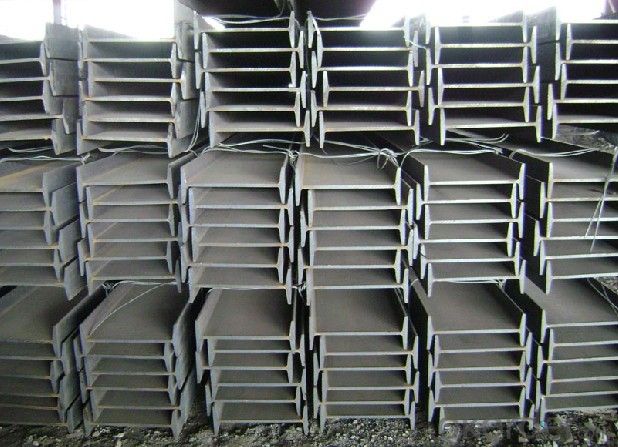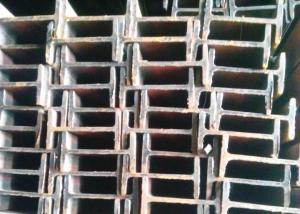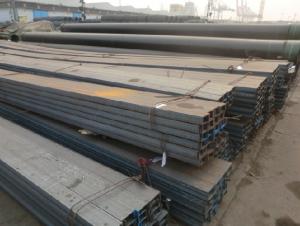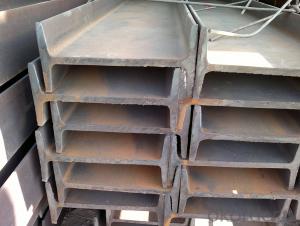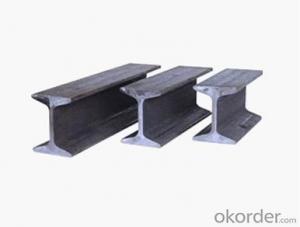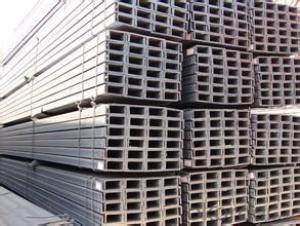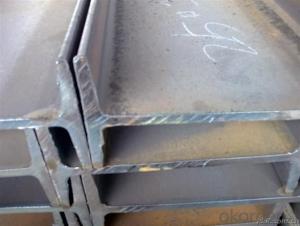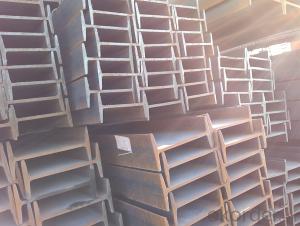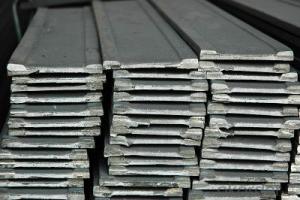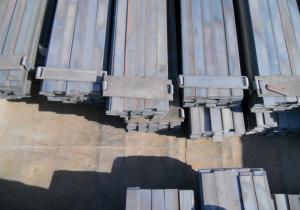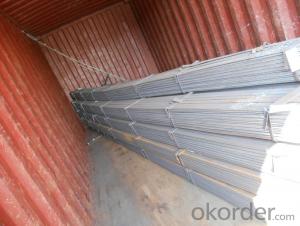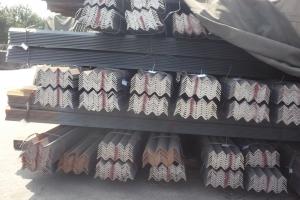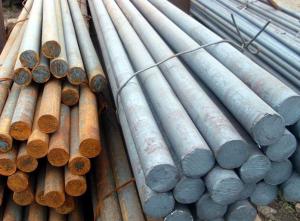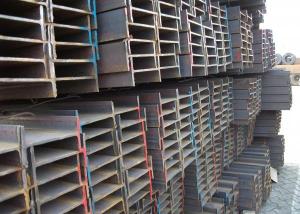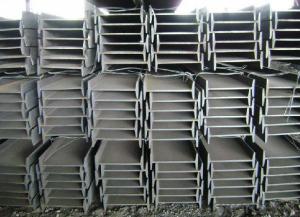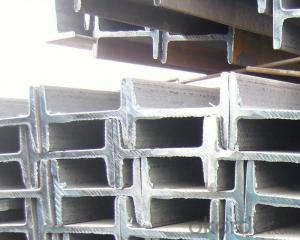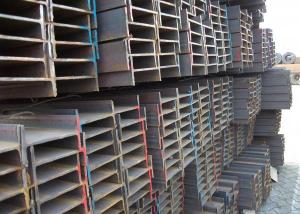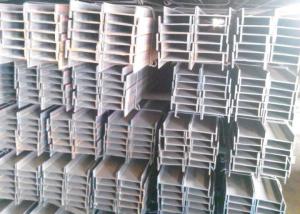Q235 Barbon Steel I Beam Bar
- Loading Port:
- China Main Port
- Payment Terms:
- TT or LC
- Min Order Qty:
- -
- Supply Capability:
- -
OKorder Service Pledge
OKorder Financial Service
You Might Also Like
Product Description:
OKorder is offering Q235 Barbon Steel I Beam Barat great prices with worldwide shipping. Our supplier is a world-class manufacturer of steel, with our products utilized the world over. OKorder annually supplies products to European, North American and Asian markets. We provide quotations within 24 hours of receiving an inquiry and guarantee competitive prices.
Product Applications:
Q235 Barbon Steel I Beam Bar are ideal for structural applications and are widely used in the construction of buildings and bridges, and the manufacturing, petrochemical, and transportation industries.
Product Advantages:
OKorder's Q235 Barbon Steel I Beam Bar are durable, strong, and resist corrosion.
Main Product Features:
· Premium quality
· Prompt delivery & seaworthy packing (30 days after receiving deposit)
· Corrosion resistance
· Can be recycled and reused
· Mill test certification
· Professional Service
· Competitive pricing
Product Specifications:
Manufacture: Hot rolled
Grade: Q195 – 235
Certificates: ISO, SGS, BV, CIQ
Length: 6m – 12m, as per customer request
Packaging: Export packing, nude packing, bundled
Chinese Standard (H*W*T) | Weight (Kg/m) | 6m (pcs/ton) | Light I (H*W*T) | Weight (Kg/m) | 6m (pcs/ton) | Light II (H*W*T) | Weight (Kg/m) | 6M |
100*68*4.5 | 11.261 | 14.8 | 100*66*4.3 | 10.13 | 16.4 | 100*64*4 | 8.45 | 19.7 |
120*74*5.0 | 13.987 | 11.9 | 120*72*4.8 | 12.59 | 13.2 | 120*70*4.5 | 10.49 | 15.8 |
140*80*5.5 | 16.89 | 9.8 | 140*78*5.3 | 15.2 | 10.9 | 140*76*5 | 12.67 | 13.1 |
160*88*6 | 20.513 | 8.1 | 160*86*5.8 | 18.46 | 9 | 160*84*5.5 | 15.38 | 10.8 |
180*94*6.5 | 24.143 | 6.9 | 180*92*6.3 | 21.73 | 7.6 | 180*90*6 | 18.11 | 9.2 |
200*100*7 | 27.929 | 5.9 | 200*98*6.8 | 25.14 | 6.6 | 200*96*6.5 | 20.95 | 7.9 |
220*110*7.5 | 33.07 | 5 | 220*108*7.3 | 29.76 | 5.6 | 220*106*7 | 24.8 | 6.7 |
250*116*8 | 38.105 | 4.3 | 250*114*7.8 | 34.29 | 4.8 | 250*112*7.5 | 28.58 | 5.8 |
280*122*8.5 | 43.492 | 3.8 | 280*120*8.2 | 39.14 | 4.2 | 280*120*8 | 36.97 | 4.5 |
300*126*9 | 48.084 | 3.4 | 300*124*9.2 | 43.28 | 3.8 | 300*124*8.5 | 40.87 | 4 |
320*130*9.5 | 52.717 | 3.1 | 320*127*9.2 | 48.5 | 3.4 | |||
360*136*10 | 60.037 | 2.7 | 360*132*9.5 | 55.23 | 3 |
FAQ:
Q1: Why buy Materials & Equipment from OKorder.com?
A1: All products offered byOKorder.com are carefully selected from China's most reliable manufacturing enterprises. Through its ISO certifications, OKorder.com adheres to the highest standards and a commitment to supply chain safety and customer satisfaction.
Q2: How do we guarantee the quality of our products?
A2: We have established an advanced quality management system which conducts strict quality tests at every step, from raw materials to the final product. At the same time, we provide extensive follow-up service assurances as required.
Q3: How soon can we receive the product after purchase?
A3: Within three days of placing an order, we will begin production. The specific shipping date is dependent upon international and government factors, but is typically 7 to 10 workdays.
Q4: What makes stainless steel stainless?
A4: Stainless steel must contain at least 10.5 % chromium. It is this element that reacts with the oxygen in the air to form a complex chrome-oxide surface layer that is invisible but strong enough to prevent further oxygen from "staining" (rusting) the surface. Higher levels of chromium and the addition of other alloying elements such as nickel and molybdenum enhance this surface layer and improve the corrosion resistance of the stainless material.
Q5: Can stainless steel rust?
A5: Stainless does not "rust" as you think of regular steel rusting with a red oxide on the surface that flakes off. If you see red rust it is probably due to some iron particles that have contaminated the surface of the stainless steel and it is these iron particles that are rusting. Look at the source of the rusting and see if you can remove it from the surface.
Images:
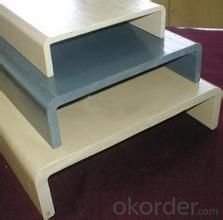
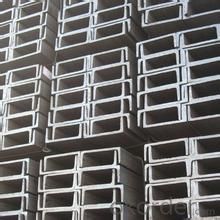
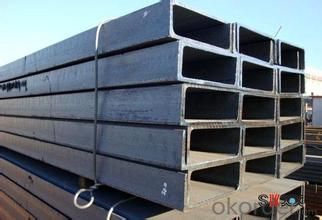
- Q: What is the purpose of a camber in a steel I-beam?
- The purpose of incorporating a camber into a steel I-beam is to compensate for the deflection experienced when subjected to a load. When a vertical load is applied to a beam, it tends to bend or sag in the middle, which can pose problems in certain applications that require a level or straight surface. During the manufacturing process, a slight upward curvature is intentionally introduced to the steel I-beam, known as camber. This curvature is specifically designed to counteract the expected deflection caused by a given load. As the beam is loaded, the camber gradually diminishes, resulting in a more straightened shape. This ensures that a level or straight surface is maintained, even under heavy loads. The calculation of the camber in a steel I-beam is meticulously performed, taking into account the anticipated loads and desired limits for deflection. This camber is typically applied during fabrication, where the beam undergoes heating and manipulation to achieve the desired camber profile. The amount of camber can vary depending on factors such as the span length, distribution of the load, and properties of the material. In conclusion, the purpose of incorporating camber into a steel I-beam is to counteract the deflection experienced under load, guaranteeing the maintenance of a level or straight surface. This design feature enhances the structural integrity and performance of the beam in applications where precise control of deflection is crucial.
- Q: What are the advantages of using steel I-beams in construction?
- Using steel I-beams in construction offers numerous benefits. Firstly, their exceptional strength and durability make them ideal for constructing large structures such as bridges, high-rise buildings, and industrial facilities. They can support heavy loads and resist bending or warping. This strength-to-weight ratio allows for longer spans and fewer support columns, giving architects and engineers more design flexibility. Another advantage is the versatility of steel I-beams. They can be easily fabricated into different shapes and sizes to meet various construction needs. This flexibility allows for efficient use of materials, reducing waste and overall construction costs. Additionally, steel I-beams can be used in both traditional and modern architectural designs as they are compatible with other building materials. Moreover, steel is a sustainable and environmentally friendly material. It is 100% recyclable, meaning that steel I-beams can be repurposed or reused at the end of their lifespan. This reduces the demand for raw materials and minimizes waste and energy consumption associated with manufacturing new beams. Steel I-beams also offer excellent fire resistance. Unlike wood and other materials, steel does not burn or contribute to the spread of flames. This makes steel I-beams a safer choice for construction, especially in areas prone to wildfires or where fire safety is a top priority. Additionally, steel I-beams require relatively low maintenance compared to other construction materials. They do not rot, decay, or attract pests like termites, which significantly prolongs the lifespan of a structure. Building owners can enjoy long-term cost savings due to this durability and low maintenance requirement. In conclusion, the advantages of using steel I-beams in construction include their exceptional strength and durability, design versatility, sustainability, fire resistance, and low maintenance requirements. These benefits make steel I-beams a popular and reliable choice for various construction projects.
- Q: How do steel I-beams perform in areas with heavy snow loads?
- Steel I-beams are renowned for their robustness and longevity, rendering them an optimal selection for regions burdened with copious amounts of snow. The distinctive configuration of I-beams, featuring flanges and a web, facilitates the uniform distribution of weight and pressure exerted by the weighty snow, effectively averting any structural failure. The flanges of the I-beams furnish resistance against bending and twisting forces, while the web acts as a supportive framework, ensuring the beam remains steadfast and capable of bearing the snow's weight. This amalgamation of strength and support empowers I-beams to withstand heavy snow loads without experiencing significant distortion or harm. In regions where heavy snow loads are prevalent, building regulations often mandate the usage of steel I-beams to guarantee the structural integrity of edifices. This is due to the proven ability of I-beams to endure the excessive weight and their reduced susceptibility to deformation or collapse in comparison to alternative construction materials. Moreover, steel I-beams possess high tensile strength, enabling them to withstand the forces of compression and tension induced by snow accumulation and thawing. This further bolsters their performance in areas burdened with heavy snow loads. It is crucial to note that while steel I-beams excel in handling heavy snow loads, meticulous engineering and design are imperative for their successful implementation. Factors such as the dimensions and spacing of the I-beams, as well as the overall structural blueprint, must be meticulously contemplated to ensure the building can securely sustain the snow loads for an extended duration. All in all, steel I-beams emerge as an exceptional choice for regions plagued by heavy snow loads due to their strength, durability, and ability to uniformly distribute weight. Their proficiency in such conditions has garnered widespread recognition, rendering them a sought-after option for construction endeavors in snow-prone areas.
- Q: No. 20 I-beam, span 9 meters, can support the concrete roof?
- No. 20 I-beam 9 meters span, even without bearing, the naked eye can see the middle bend (waist down).
- Q: What type of I-beam should be used for span 8m? Beam load is mainly 10cm thick concrete floor
- The span 8m should be made of 20# I-beam @1000, and the ends should be solid. The main load is 10cm thick concrete floor.
- Q: What are the maintenance requirements for steel I-beams?
- The maintenance requirements for steel I-beams typically involve regular inspections for signs of corrosion, damage, or structural issues. Cleaning the surface and applying protective coatings can help prevent rust and extend the lifespan of the beams. Additionally, it is important to address any issues promptly to avoid further damage and ensure the structural integrity of the beams.
- Q: Can steel I-beams be used in curved applications?
- Indeed, curved applications can utilize steel I-beams. Although traditionally limited to straight spans and linear structures, I-beams possess the versatility to be incorporated into curved designs as well. The process of curving steel I-beams involves bending them to the desired radius or curvature, which can be accomplished through a range of techniques like hot or cold bending. Architects and engineers commonly employ curved steel I-beams in both architectural and structural designs, particularly when aiming for curved or arched elements. These beams offer a combination of strength, durability, and the opportunity for innovative and visually appealing designs. Nonetheless, it is crucial to consult with structural engineers and experts to ensure that the curved I-beams meet all necessary load-bearing requirements and structural considerations.
- Q: How do Steel I-Beams perform in terms of energy absorption?
- Steel I-beams are highly efficient in terms of energy absorption. Due to their structural composition and shape, they are capable of withstanding heavy loads and distributing the forces evenly along the beam. This allows them to absorb and dissipate energy effectively, making them a reliable choice for applications where energy absorption is crucial, such as in construction and industrial settings.
- Q: How are steel I-beams protected against rust and corrosion during storage?
- To prevent rust and corrosion during storage, steel I-beams are commonly safeguarded using various methods. One such method involves applying a protective coating, such as paint or galvanizing, which acts as a barrier between the steel and the environment. This barrier effectively hinders the formation of rust and corrosion by preventing direct contact between the metal surface and moisture or oxygen. When using paint as a protective coating, a layer of primer is typically applied first to improve adhesion and corrosion resistance. This is then followed by one or more layers of paint to provide additional protection. The choice of paint type and quality depends on factors such as the duration of storage and expected environmental conditions. Alternatively, galvanizing is widely employed to protect steel I-beams. This process involves coating the steel with a layer of zinc through hot-dip galvanizing or electroplating. Zinc acts as a sacrificial anode, corroding before the steel does. This sacrificial corrosion process effectively safeguards the steel against rust and corrosion. In addition to protective coatings, steel I-beams can be stored in controlled environments with reduced humidity levels or in specially designed storage facilities that minimize exposure to moisture and corrosive elements. Regular inspections and maintenance are essential to detect and address any signs of rust or corrosion that may occur despite these preventive measures. Overall, a combination of protective coatings, controlled environments, and proper maintenance practices ensures that steel I-beams remain free from rust and corrosion during storage.
- Q: What are the considerations for deflection limits in steel I-beam design?
- When designing steel I-beams, it is important to take into account several considerations regarding deflection limits. Deflection refers to the bending or flexing of a structural member under load. To ensure the structural integrity and functionality of the steel I-beam, it is crucial to limit deflection within acceptable limits. Here are some key factors to consider when setting deflection limits in steel I-beam design: 1. Serviceability: Maintaining serviceability is a primary concern when determining deflection limits. Excessive deflection can cause discomfort or inconvenience for occupants, especially in structures like floors or bridges. Establishing deflection limits that provide a satisfactory level of serviceability is crucial to ensure the structure remains comfortable and functional for its intended use. 2. Aesthetic Considerations: Deflection limits are also important from an aesthetic perspective. Excessive deflection can result in visible deformations or sagging, compromising the visual appeal of the structure. Setting appropriate deflection limits allows designers to maintain the desired appearance of the steel I-beams. 3. Structural Stability: Another critical consideration for deflection limits is the overall stability of the structure. Excessive deflection may lead to structural instability, causing the steel I-beam to buckle or fail under load. By setting appropriate deflection limits, designers can ensure that the structure remains stable and can safely support the intended loads without compromising its integrity. 4. Material and Design Standards: Deflection limits are often determined based on industry standards and codes, such as those provided by organizations like the American Institute of Steel Construction (AISC). These standards consider factors such as the material properties of the steel, design loads, and safety factors. Compliance with these standards is crucial to ensure that the steel I-beam design meets the required performance criteria. 5. Load Types: The type of loads that the steel I-beam will be subjected to also influence the deflection limits. Different load types, such as dead loads (permanent loads like the weight of the structure itself) and live loads (temporary loads like occupants or furniture), have varying deflection limits. The design should account for these different load types and establish appropriate deflection limits accordingly. In conclusion, the considerations for deflection limits in steel I-beam design revolve around ensuring serviceability, maintaining aesthetic appeal, ensuring structural stability, complying with industry standards, and accounting for different load types. By carefully considering these factors, designers can determine appropriate deflection limits that will result in a safe, functional, and aesthetically pleasing steel I-beam design.
Send your message to us
Q235 Barbon Steel I Beam Bar
- Loading Port:
- China Main Port
- Payment Terms:
- TT or LC
- Min Order Qty:
- -
- Supply Capability:
- -
OKorder Service Pledge
OKorder Financial Service
Similar products
Hot products
Hot Searches
Related keywords
